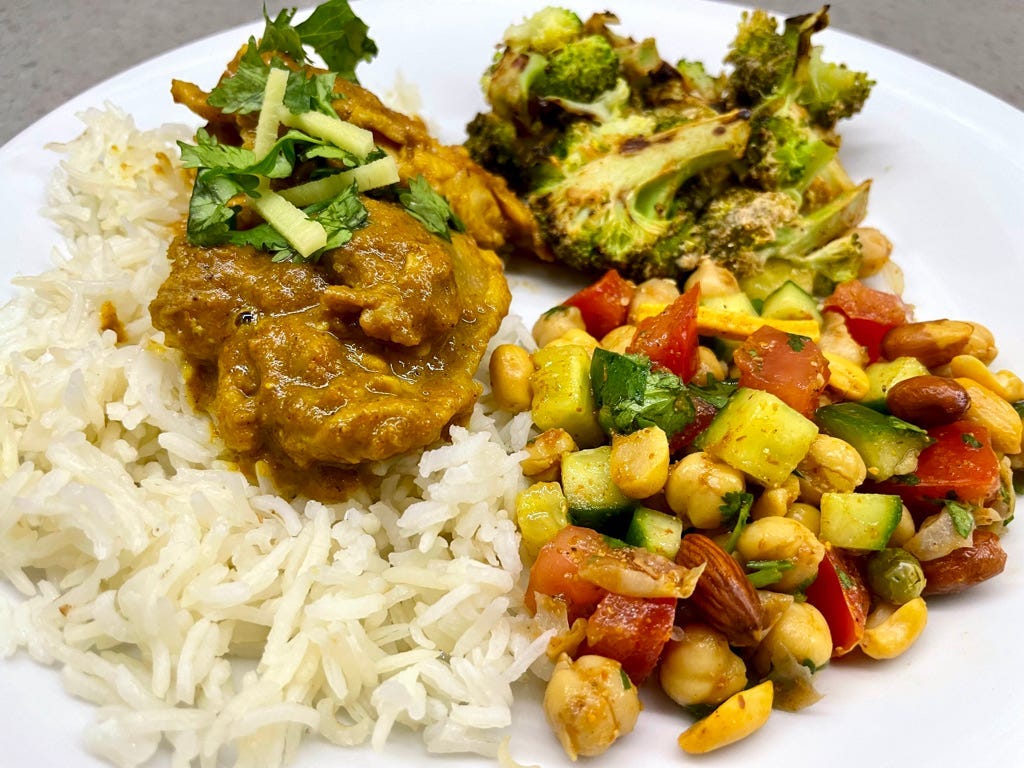- Insider spoke with a dietitian and chef to on how to add vegetables to and cut fat in South Asian meals.
- Ethnic food is not inherently "unhealthy," and making use of cultural recipes can add important nutrients.
- Balancing carbs with veggies and protein and cutting down on fat can lead to long-term health benefits.
As a health reporter and a Pakistani-American, dinner time can sometimes feel like a conundrum.
I want to eat the food I grew up with while getting all my nutrients and fiber. Pakistani food, along with all ethnic food, is not inherently "unhealthy," but some dishes can be heavy on the rice and oil, and low on fresh vegetables.
Eating nutritious food is especially important for South Asians, who comprise 60% of the world's heart disease patients and are at a higher risk for type 2 diabetes. A balanced diet reduces the risk for both chronic illnesses.
I spoke with Nazima Qureshi, a registered dietitian and the co-founder of The Healthy Muslims, and Mehreen Karim, a chef and editor at Bon Appétit, on ways to make South Asian food more nutritious while staying true to the traditional flavor.
Here are five dietitian- and chef-approved ways to balance out your plate of South Asian food while keeping it tasty:
1. For carb-heavy dishes, add extra veggies and protein
One of the biggest trends in South Asian meals can be their reliance on refined and whole grain carbohydrates that come from rice and breads.
Carbs from rice and breads get a bad reputation from health influencers, but these cheap, staple foods contain important nutrients like iron B-vitamins, and eating carbs helps power and rebuild your muscles when you workout.
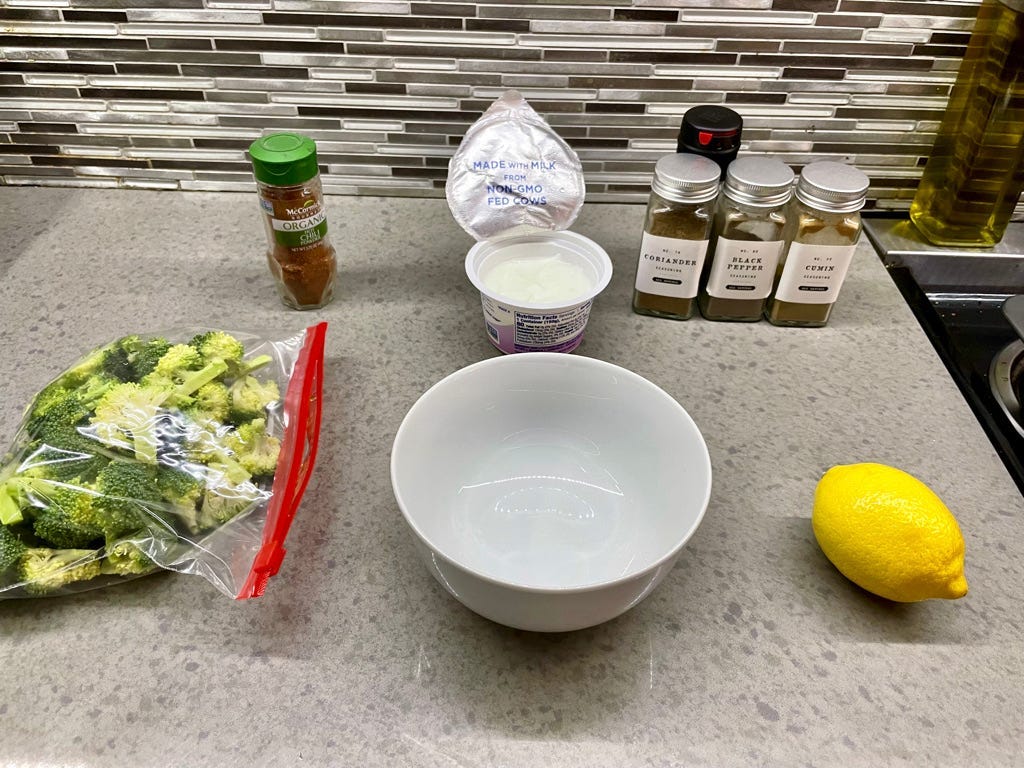
A plate of curry over rice with a side of roti (flatbread), however, isn't providing you with the fiber, protein, and nutrients from vegetables you need. Eating too many carbs can cause your blood sugar levels to spike, which eventually crashes and leaves you sluggish and tired.
Qureshi said decrease your rice consumption to about a cup while filling half the plate with both fresh and cooked vegetables.
2. Marinate your vegetables in yogurt and spices for extra flavor — and be careful not to over-cook them
Some of the most popular South Asian dishes center okra, spinach, eggplant, and other vegetables, all important sources of vitamins and minerals.
When making veggie dishes, Qureshi said not to overcook the vegetables. Overcooking rids vegetables of their bright color and can strip them of nutrients, though cooking them correctly can add health benefits not present in their raw state.
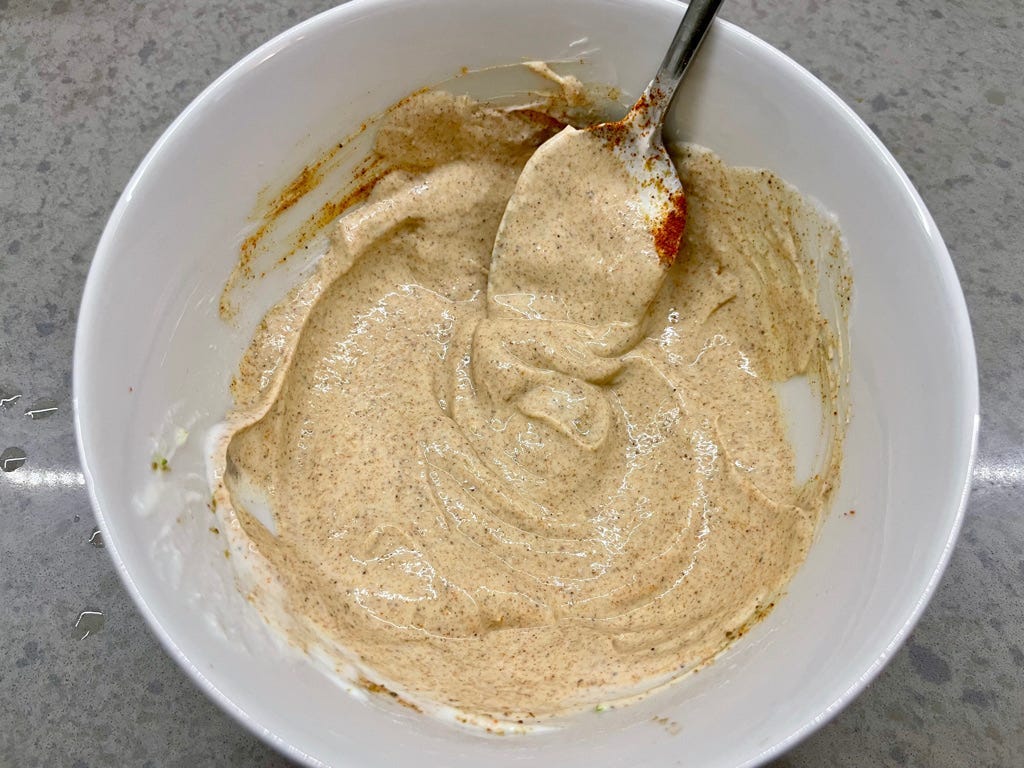
I typically add one seasonal vegetable to my South Asian meals, but my garlicky brussel sprouts can feel out of place alongside the spicy chicken.
To keep the meal cohesive, Karim recommends marinating your vegetables in yogurt, lemon, and traditional spices. "Any type of yogurt marinade, I'm realizing, works on more than just poultry and fish," she said.
You can even blend together ground cardamom, coriander seeds, black pepper, and other whole spices and use the mix as a crust on butternut squash for added texture, Karim said.
3. Try air frying and roasting over deep-frying for crispiness
Karim said when people are looking for a "healthy" dish but don't want to sacrifice flavor and delight, they are often searching for a "satisfying texture."
Fried foods taste good no matter what is being fried in part due to their crispiness, she said. Instead of deep frying, Karim said to achieve crispiness by air frying, roasting, or broiling.
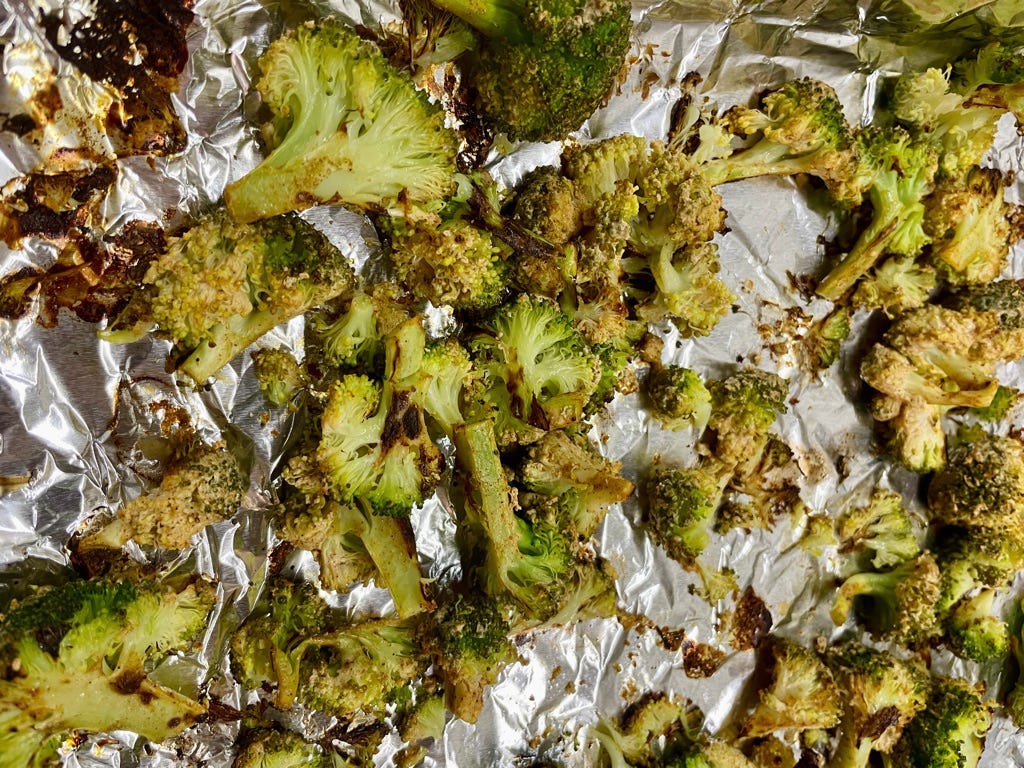
"Any dish that has a frying element to it, it's been helpful to use an air fryer instead or to roast it in a particular where it gets marinated in the same flavors but gets stuck in the oven instead of sizzling in oil."
I marinated broccoli in yogurt, lemon, and spices and broiled it for a few minutes to achieve a caramelized and slightly charred exterior.
4. Make use of plant-based proteins, which are traditionally used in South Asian cooking
Add protein to your plate through lentils, chickpeas, and other plant-based (not to mention cheap) proteins.
South Asians have historically made dozens of different daal (lentil) recipes using the red, yellow, and black varieties. In my house, lentils worked as a easy and cheap protein when we ran low on groceries.
"Lentils have become more popularized in Western cooking, thanks to the rise of Western veganism, but I would say veganism and obviously vegetarianism [in South Asia] predated the Western obsession with," Karim said. "Therefore they've mastered tons of ways to utilize lentils in their cooking."
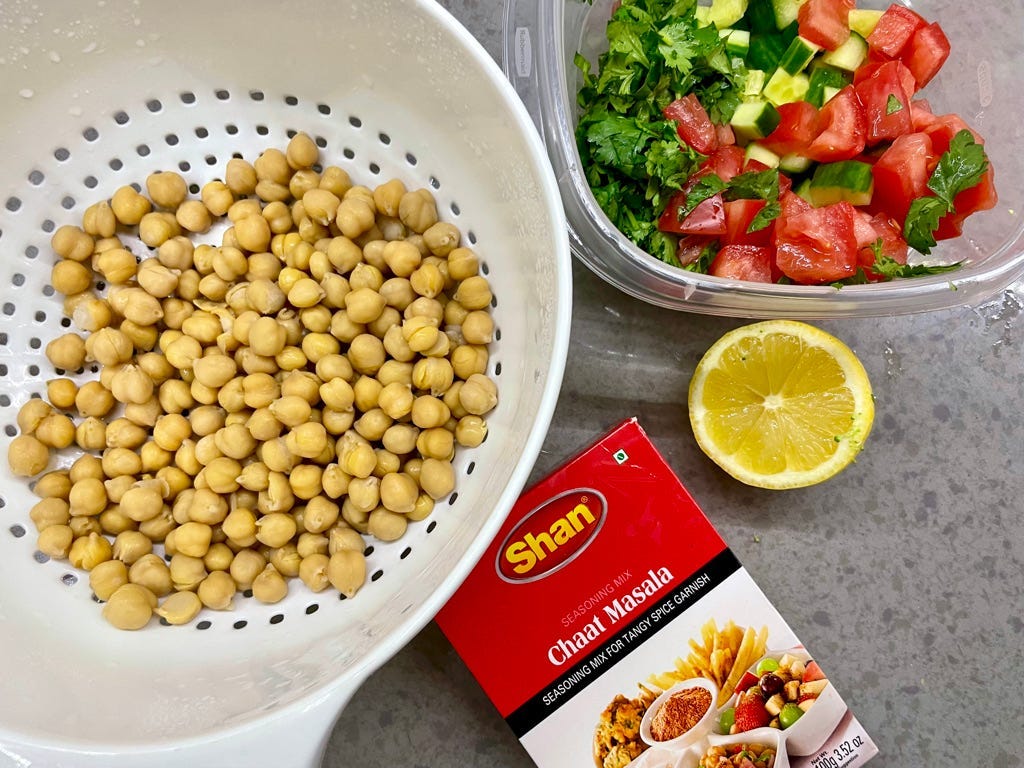
Qureshi added plant-based proteins have a lot of fiber, an indigestible carb that aids in gut health and can regulate blood sugar levels.
Using their advice, I opted for a chola chaat (chickpea street food)-inspired salad for add extra protein and veggies on my plate. I combined tomatoes, cucumber, a can of chickpeas sitting in the back of my pantry, lemon, and a premade spice blend for a quick side.
I added a spicy nut mix on top when serving for extra texture.
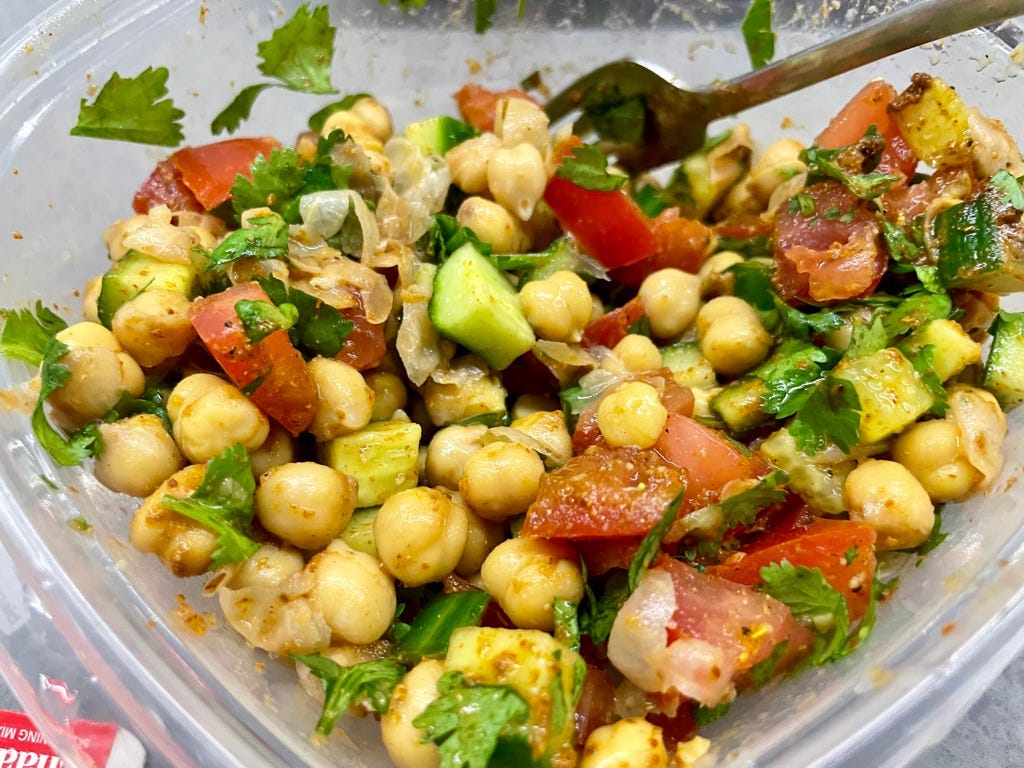
5. Use less oil and butter, but you don't need to cut it out completely
Fat undeniably adds flavor, and Karim would never suggest a cook cut it out completely. Ghee, a form of clarified butter, and coconut oil even have cultural and religious significance in parts of South Asia.
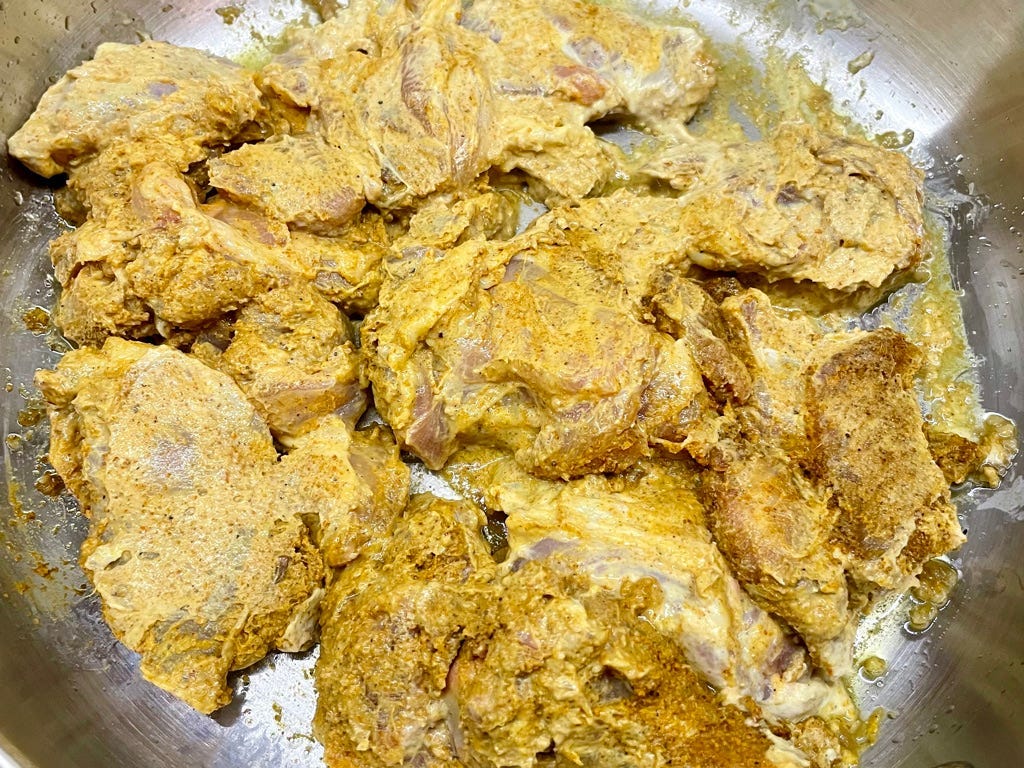
The trick to fat is reducing the amount, Qureshi said. Limit oil to a teaspoon or find spray bottles to evenly distribute it on the pan. Karim recommended adding blended cottage cheese or pureed avocado in a creamy or buttery dish to add nutrients.
And keep deep fried foods like samosas (vegetable or meat-filled dumplings) and pakoras (fried veggies) as occasional treats rather than everyday staples, Qureshi said.
Non-Western foods are healthy, too
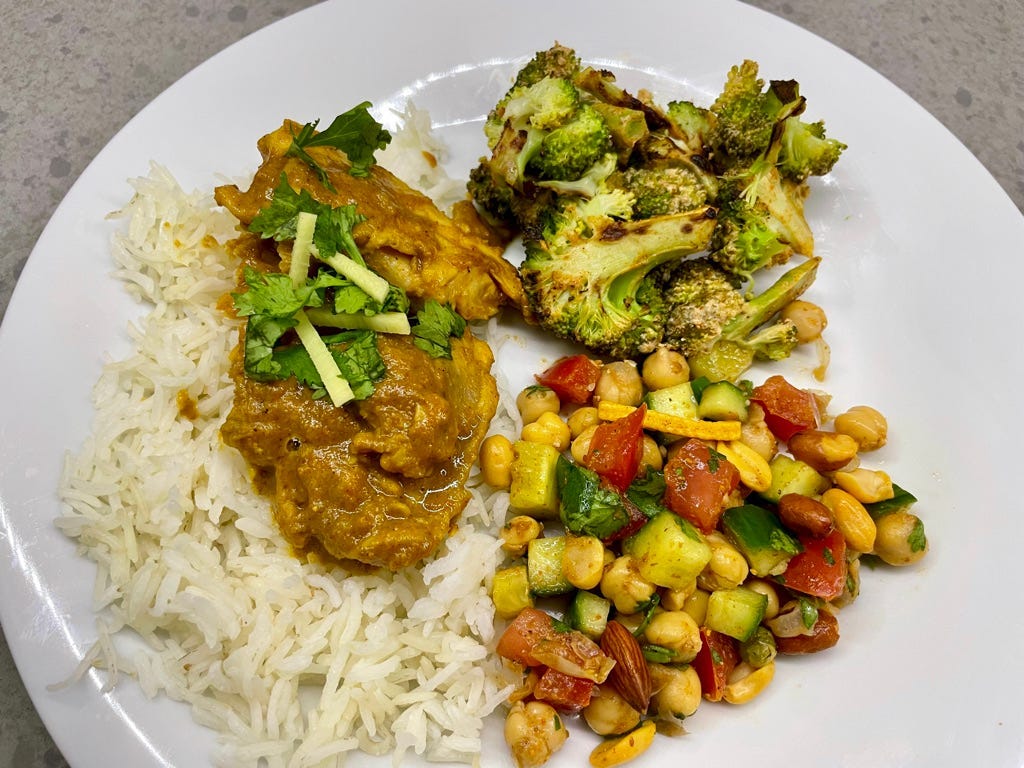
Karim and Qureshi's advice did the trick — I kept the Pakistani flavors in my dinner, but successfully balanced out carbs and fat by increasing vegetables. I felt full for the rest of the night and couldn't wait to wake up the next day to eat leftovers.
You don't need to sacrifice cultural foods to eat a balanced diet, Qureshi said. Small changes made overtime can lead to long-lasting health benefits. "You don't have to turn everything upside down in order to be healthy," she said.

